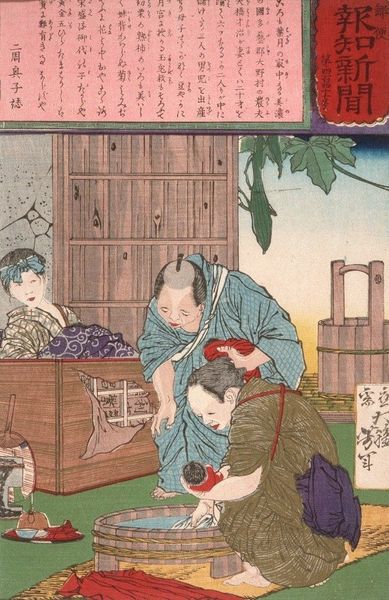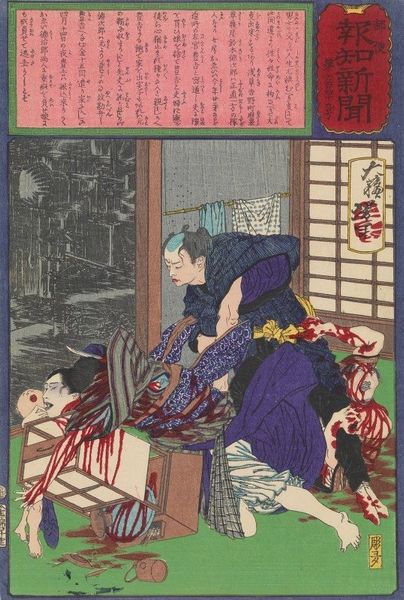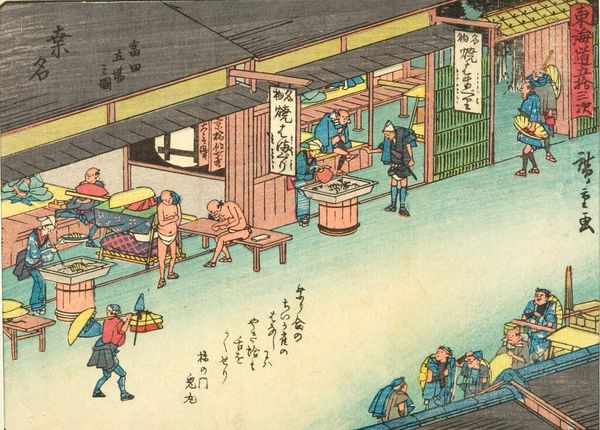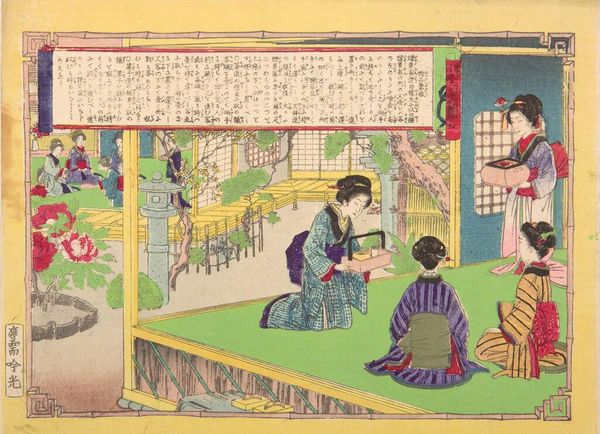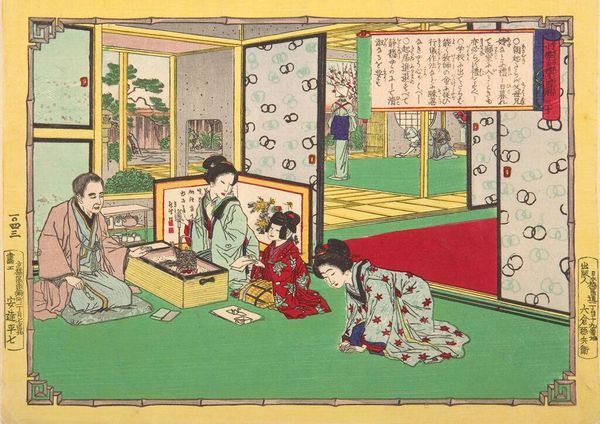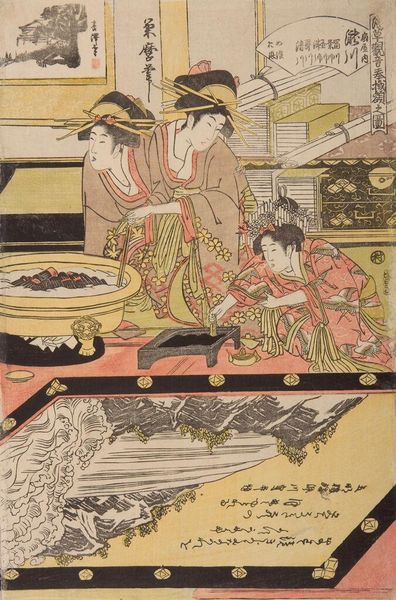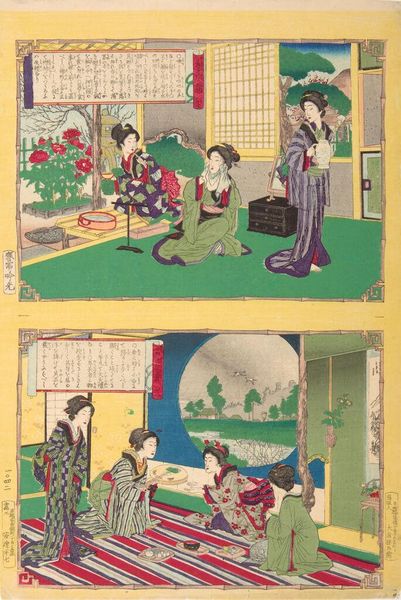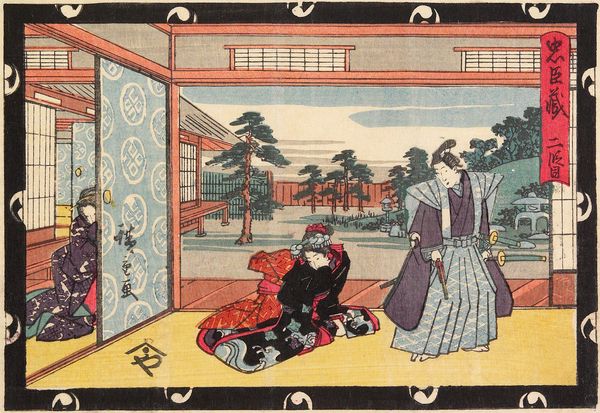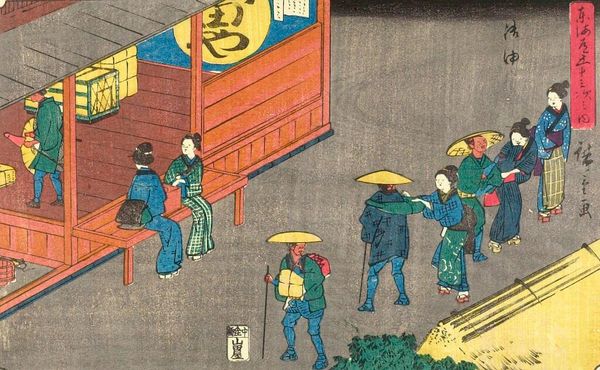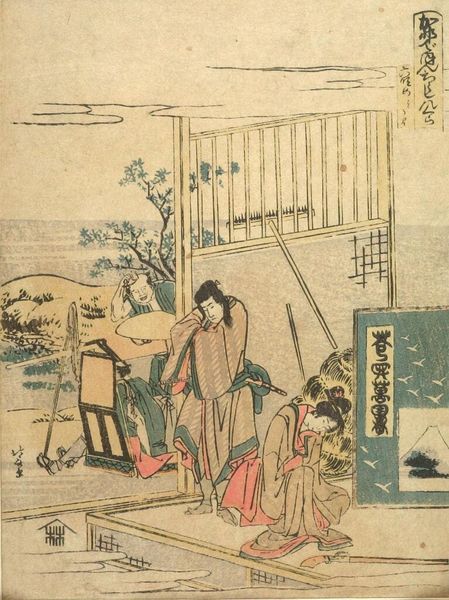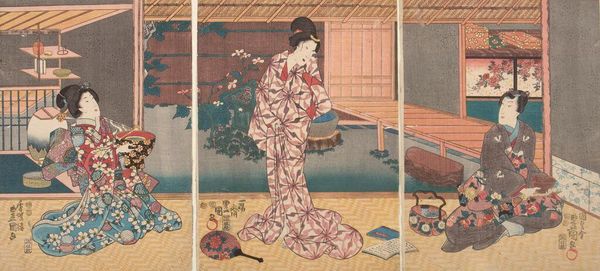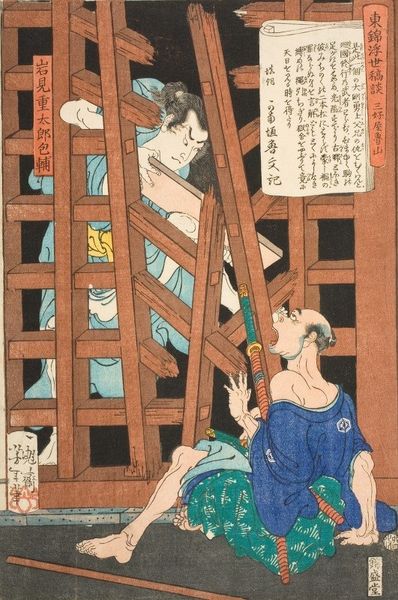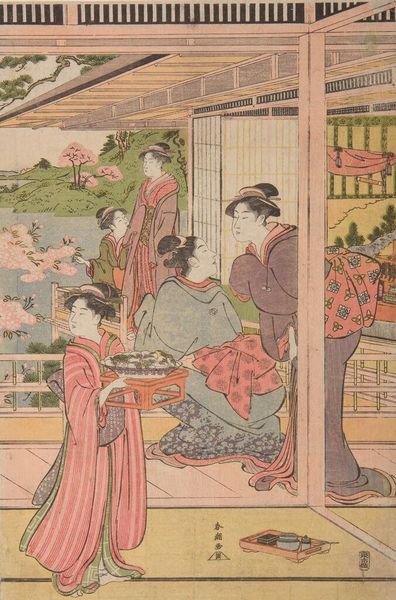
The Geisha Umekichi Imploring Nakajima Seibi to Part from Her and Return to His Studies 1875
0:00
0:00
Copyright: Public Domain: Artvee
Editor: So, here we have "The Geisha Umekichi Imploring Nakajima Seibi to Part from Her and Return to His Studies," a woodblock print by Tsukioka Yoshitoshi from 1875. I’m immediately struck by the domestic intimacy of the scene and how it's presented through the meticulous details of everyday materials. What catches your eye about this piece? Curator: I see a compelling negotiation of class and labor embedded within this image's materiality. It's not simply about depicting a narrative, but about understanding how the production and consumption of such images, particularly woodblock prints, fueled a growing urban market. Consider the resources – the wood, the pigments, the labor of the artist, the carver, the printer – all contributing to a commodity circulating within a specific social stratum. What about the textual components? Editor: I see that, almost like a document, the inscription makes me consider who it was meant to be shown to. It feels separate from the figures, and is that even a real headline up at the top? Curator: Exactly! It points to the relationship between art, information, and audience, but it’s really meant as a decorative, yet marketable narrative, produced and purchased as commodities. Notice the precise lines of the woodblock technique. It enabled mass production and broader accessibility, a departure from earlier, more exclusive art forms. How do you think that affected the role of the artist in society at the time? Editor: It makes me wonder how artists were perceived, perhaps shifting from artisans to something closer to cultural commentators, responding to popular demands and tastes in a mass-producible way. Curator: Precisely! This print then isn’t just a visual object; it’s a manifestation of shifting social structures and economic realities. Its value resides not merely in its aesthetic qualities but in the network of production, circulation, and consumption that it embodies. Editor: I see now; examining its materiality allows for an examination of the complex social contexts of the art. Curator: Indeed. By analyzing its materials, methods of production, and how it was intended to be consumed we discover rich, valuable history.
Comments
No comments
Be the first to comment and join the conversation on the ultimate creative platform.
